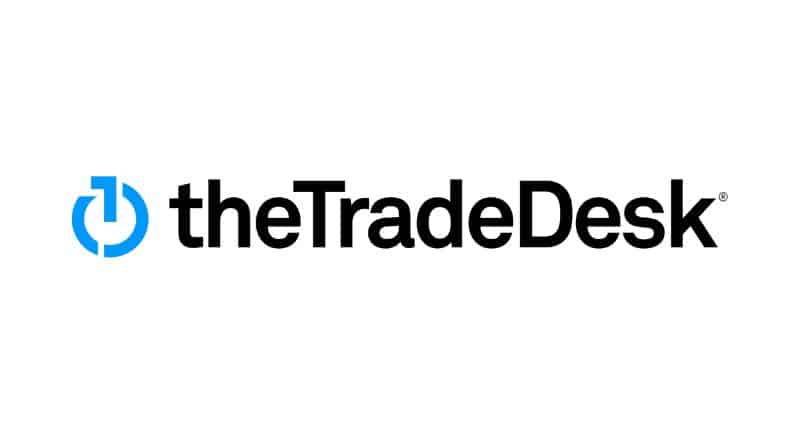New research conducted by The Trade Desk has revealed Aussies who tune into Total TV (linear TV and BVOD combined) are nearly four times (3.8x) more likely to trust the ads they see when compared to ads they see on social media.
Research featured in The Trade Desk’s Future of TV report also highlights that BVOD is now well entrenched in the viewing habits of millions of Australians, with six in 10 (63 per cent) of BVOD viewers tuning in at least once weekly.
But while consumers inherently trust linear TV thanks to its association with Australia’s largest and most established networks, BVOD enables advertisers to tap into the data-driven capabilities of digital media while leveraging the trust and receptivity that viewers associate with traditional linear TV.
While BVOD is a channel familiar to many Australians, with around 2.5 million viewers choosing it over linear TV every week, tuning into an average of 26 million hours of BVOD content weekly, advertisers are also increasingly embracing it for its data-driven benefits and incremental reach.
So much so that BVOD has emerged as the only TV channel to see increased revenue over the past year despite the industry’s economic headwinds.
Ashton De Santis, director of Inventory Partnerships, ANZ at The Trade Desk, shared with Mediaweek that BVOD leverages the trust and receptivity that viewers have of linear TV, thanks to its association with Australia’s largest and most established networks.
De Santis continued: “In addition, BVOD platforms typically implement strict content moderation and brand safety measures, which allows advertisers to enhance the perception and credibility of their advertising.
As such, Total TV is an attractive offering for advertisers who value brand safety, as they know what their ads are appearing next to, and they can also leverage BVOD to provide a consistent way for them to showcase their brands.”
Audience trust in Total TV also stems from the quality of content, De Santis highlighted.
“Unlike user-generated content on social media platforms, consumers expect broadcasters to deliver quality advertising to be paired with premium content, and they will trust this content above other platforms. And BVOD helps deliver this experience by offering premium content that allows natural interruption of ads, creating less friction amongst viewers while improving engagement,” he said.
De Santis noted that everything that has happened in the history of digital marketing has been a dress rehearsal for what is happening with BVOD in that new streaming viewing models are now sitting side by side with traditional TV formats.
“This provides advertisers with an unparalleled opportunity when it comes to capturing the trust and attention of viewers.”
Gen Z’s total TV habits
The research by the the global technology company also highlighted how Gen Zs are leading the change in viewing habits.
Amongst those who watch BVOD, Gen Z (aged 18–24) are most likely to watch it regularly, and over seven in ten (71 per cent) regularly consume BVOD content in its live-streamed format, the research noted.
This is at the demise of linear TV, with 2 in 5 of Gen Zs (37 per cent) claiming they expect to stop watching linear TV completely in the next five years.
De Santis noted that BVOD is a preferred channel for advertisers and consumers, particularly Gen Z, because it offers numerous advantages from a consumer point of view.
“Beyond catch-up content, the progress in BVOD has made it possible for viewers to now experience live-stream events through channels. We saw a great example of this just the other week in the Women’s World Cup, where a record 957,000 Australians watched the Australia vs. England semi-final, all completely live on 7plus,” he said.
De Santis highlighted that when it comes to viewing habits, amongst the millions of BVOD viewers, Gen Z is most likely to watch BVOD regularly, with over one-third (37%) of them planning to move beyond linear TV in the next five years, according to the research.
“For these younger generations, FAST channels are showing potential as they offer viewers a more curated and leaned back experience that allows them to discover content of their choice.”
“Broadcasters have continued to innovate and invest in content, UX, data, and technology to focus on user experience and personalisation. This, alongside audiences shifting to IP-based platforms, has continued to fuel the significant growth in BVOD,” he added.
De Santis also noted that advertisers have recognised the significant benefits of using BVOD platforms to connect with their target audiences and investing in BVOD for its incremental reach beyond linear TV and its data-driven benefits.
“As advertisers increasingly embrace BVOD, they understand its role as a brand-safe alternative to walled gardens, where they can advertise at scale against premium content that is consistent with their brand,” he said.
“As more brand advertisers understand the impact of data-driven precision in TV, they will apply it in a more consistent way across all advertising channels on the open internet, becoming more adept at omnichannel frequency management, performance, and data usage,” he added.

The role of trust in reporting on ads on Total TV
De Santis noted that trust plays a critical role in all digital advertising, not just Total TV.
With the consumer digital journey made complicated with so fragmented media choices, understanding the reporting of ads holistically across all channels is key.
“The world of digital advertising has predominantly been controlled by a few large tech companies which operate as closed ecosystems known as ‘walled gardens’. They are notorious for not providing advertisers much insight into where their ads show up and which ads drive a higher return on investment (ROI).
De Santis continued: “This lack of granularity makes analysing campaign performance, making comparisons between different advertising approaches and deriving business-level insights difficult for advertisers. As a result, advertisers, who are under increasing pressure to demonstrate the value of their work, struggle to justify their ad spend.”
De Santis noted that part of the solution to building greater trust and transparency for advertisers lies with the ‘open internet’. This allows advertisers to determine the effectiveness of their investment clearly and transparently through independent, third-party verification and measurement.
“On the open internet, greater trust and transparency empowers marketers to evaluate advertising campaigns effectively and make more informed decisions to drive better performing campaigns,” he added.
The most watched channel and genre by Australian consumers and what that means for advertisers
De Santis also highlighted that drama, reality TV and children’s programs were the most watched genres by Australian consumers, according to The Trade Desk research.
This gives advertisers a good idea of where they should invest if they’re looking for healthy ROIs.
The Trade Desk’s data also noted that outside of genre, BVOD is Australia’s fastest-growing media channel, with 2.5 million Australians choosing it over linear TV each week.
“By 2026, it’s expected to grow to 34%. Advertisers should be looking ahead to where the market and audiences are headed, and if you ask me, BVOD is it,” De Santis added.
–
Top image: Ashton De Santis
